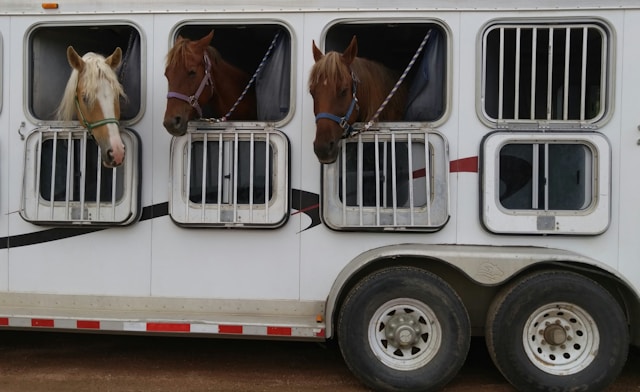Understanding the Basics of Towing
Towing heavy loads requires the right equipment and knowledge to ensure safety and efficiency on the road. Whether you’re hauling a boat, trailer, or recreational vehicle, understanding the fundamentals of towing is crucial for any driver taking on this responsibility.
Types of Hitches
There are several types of hitches available, each designed for specific towing needs:
- Receiver hitches
- Gooseneck hitches
- Fifth-wheel hitches
- Weight-distributing hitches
Each type offers unique benefits and is suited for different vehicles and load capacities. For instance, the b&w gooseneck hitch is popular among those who need to tow heavy loads with pickup trucks, offering a strong connection point in the truck bed.
Understanding Towing Capacity
Knowing your vehicle’s towing capacity is essential for safe hauling. This information can typically be found in your vehicle’s owner’s manual or on the manufacturer’s website. Exceeding this capacity can lead to dangerous situations on the road and potential damage to your vehicle.
Preparing Your Vehicle for Towing
Preparing your vehicle properly before hitching up your load is important. This ensures both safety and performance during your journey.
Checking Your Suspension
A well-maintained suspension system is crucial. It helps distribute the weight of the load evenly and maintains vehicle stability. Before towing:
- Inspect shock absorbers and struts for wear
- Check leaf springs for cracks or deformation
- Ensure all components are properly lubricated
Brake System Inspection
Your vehicle’s braking system will be under additional stress when towing. Regular inspection and maintenance of the brakes are vital:
- Check brake pads and rotors for wear
- Ensure brake fluid is at the correct level
- Test brake lights and trailer brake connections
Tire Preparation
Proper tire maintenance is critical for safe towing. Consider the following:
- Check tire pressure, including the spare
- Inspect tires for wear and damage
- Consider upgrading to tires with a higher load rating if necessary

Hitching Techniques and Safety Measures
Proper hitching is crucial for safe towing. Follow these steps to ensure your load is secure:
- Align your vehicle with the trailer
- Lower the hitch onto the ball
- Lock the coupler
- Attach safety chains in a crisscross pattern
- Connect electrical wiring for lights and brakes
- Perform a final safety check before departing
Driving Tips for Towing Heavy Loads
Towing requires adjustments to your driving style to ensure safety on the road.
Acceleration and Braking
When hauling heavy loads, remember:
- Accelerate slowly and steadily
- Allow extra distance for braking
- Use engine braking when descending hills
Turning and Maneuvering
Be mindful of your increased vehicle length and width:
- Take wider turns to accommodate your trailer
- Use mirrors frequently to monitor your trailer’s position
- Practice backing up in an empty parking lot before your trip
Speed Management
Maintain a safe speed when towing:
- Stay within posted speed limits for vehicles with trailers
- Reduce speed in adverse weather conditions
- Be prepared to slow down or pull over if experiencing trailer sway
Maintenance for Frequent Towers
Regular maintenance is crucial for those who haul loads frequently. Create a maintenance schedule that includes:
- Oil changes at shorter intervals
- Transmission fluid checks and changes
- Coolant system inspections
- Brake system maintenance
Legal Considerations
Be aware of the legal requirements for towing in your area:
- Understand weight limits for different road types
- Obtain necessary permits for oversized loads
- Comply with lighting and safety chain regulations
- Be familiar with speed limits for vehicles towing trailers
Technology and Towing
Modern technology has made towing easier and safer:
- Backup cameras with trailer guidance
- Trailer sway control systems
- Integrated trailer brake controllers
- Blind spot monitoring systems for trailers

Environmental Impact of Towing
Consider the environmental aspects of towing:
- Choose the most fuel-efficient vehicle capable of your towing needs
- Maintain your vehicle for optimal performance and reduced emissions
- Plan routes to minimize fuel consumption and emissions
Towing in Different Conditions
Adapt your towing practices to various conditions:
Mountains
- Use lower gears when ascending and descending
- Be aware of your vehicle’s temperature gauges
- Take breaks to allow your vehicle to cool down if necessary
Winter
- Equip your vehicle and trailer with appropriate winter tires
- Carry chains when required by law or conditions
- Increase following distance and reduce speed
Urban
- Plan routes to avoid tight turns and low clearances
- Be aware of parking restrictions for vehicles with trailers
- Allow extra time for navigation in congested areas
Wrapping Up Your Towing Knowledge
Towing heavy loads requires careful preparation, the right equipment, and a solid understanding of safe driving practices. By following these guidelines, you can ensure a safer and more efficient experience. Remember always to prioritize safety, stay informed about your vehicle’s capabilities, and be prepared for the challenges of hauling heavy loads.












Leave a Reply